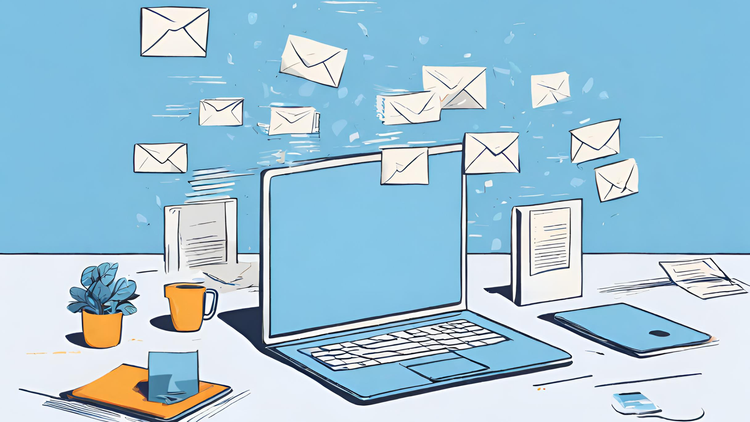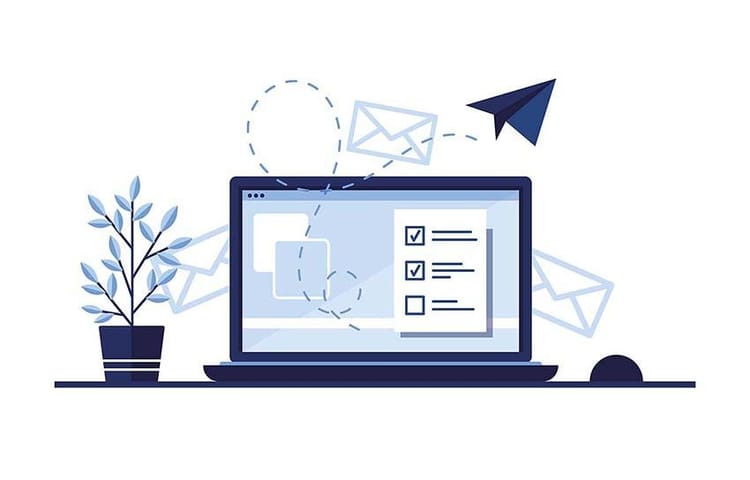The Basics of Sending Cold Emails in 2024

Actually sending a cold email isn’t all that hard: It’s fairly easy to type out an email, find an email address online, and click send.

The tough part is putting together a personalized, one-to-one email that delivers a high response rate - and ideally even sales - and all of the nuances that go into it. After all, your customer is probably already receiving emails like this every day from others. It can be extremely hard to find a piece of personal information you can naturally reference, getting those high click-through rates, or receiving the holy grail of cold emails: a delighted response from a prospect.
No one was born an online business conversationalist expert, so we’ve curated these pieces of advice to help you get the most out of your next outreach campaign.
Use a Company Email
If you have your own company email domain, it helps you gain a reader’s trust. For example, if you saw “SamtheHobbit41@gmail.com,” would you respond?
If you wouldn’t open it, then your business opportunities won’t either. “YourName@gmail.com” makes a less-than-authoritative impression to prospects than “YourName@YourCompany.com”.
To get one, all you need to do is register for a domain name, sign up for an email hosting service, and then configure your email address.
Create an Email Signature
Your email signature does not need to be fancy. All it needs is your contact information and a professional headshot to go with it. When people attach a face to a name, it helps break down the ‘stranger’ barrier they have of you in their mind.
Sample Email Signature from HubSpot
This design is clean, simple, and gets the right information across to the reader in a short amount of time. Make sure to use the colors that align with your brand, and to send a test email to yourself so you can QA what your signature looks like.
Nothing is worse than sending cold emails that took you hours to complete, only to realize the custom font you chose appears as regular text. Or worse, the text doesn’t appear at all.
When Sending Cold Emails, Personalize Them!
Think about who your prospect is, their job and interests, and hone in on how you can make them feel unique. This technique is called developing a theory of mind for your email recipient.
It answers the question they will ask themselves - “Why is this random person emailing me?” If you can do the research and explain in one sentence why you need their help specifically, then they are much more likely to respond to you.
Keep the Word Count Short & Sweet
If you are writing a monologue to a prospect, they’re not going to read it.
“Data suggests the ideal length of an email is between 50 and 125 words... When in doubt, keep emails short and under 200 words.”
- Mike Renahan, HubSpot
This is part of the reason why cold email strategy is a hard skill. You need to grab their attention, hold onto it by showing your vulnerability or the personal research you’ve done on them, and then help them understand that you can solve their pain points, all in under a few hundred words.
When writing cold emails, don’t go overboard on the emojis, if you’re confident enough to use them at all.
Try A/B Cold Email Testing
Did you know that open rates can be increased by almost 49% with A/B split testing when sending cold emails?
This kind of A/B testing is conducted using two emails with one component slightly changed, such as the subject line, and seeing which one gets the best results. The results you’re after usually involve prospects responding to or opening one of the emails more than the other. You then use the email with the better results to create yet another cold email that is varied in a different way. You repeat this process until you can no longer feel your fingers typing.
A/B email testing is a proven process of improving your writing and increasing your chances of landing a quality lead. However, how can you tell if your A/B testing is paying off for your campaigns?
Cold Email Benchmarks
Data can tell you everything, but what should an entrepreneur look for to measure their cold email success? A good place to start is a good response rate for your outreach campaign. While a 100% response rate is the most ideal outcome, it’s virtually impossible that you’d be able to achieve that level of success on any outreach campaign.
The average response rate on a cold email campaign of 11-50 prospects, and without any personalized information, is 9%, which translates into you sending 100 emails and getting maybe ten responses. Of course, a really good campaign would aim for a higher-than-average response rate.
Another good benchmark to reference is open rates, which are usually much higher than response rates. If less than 30% of people who opened your email respond, you need to take another look at that prospecting email.
Keep an eye on your percentage of soft and hard bounces. Make sure your email list doesn’t have a larger than 3% hard bounces rate. High bounce rates increase the risk that your emails will get flagged as spam. And of course, emails flagged as spam may never be seen by your recipients.
- A soft bounce is when you have the correct contact information, but the prospect’s inbox is full and can’t receive your email.
- A hard bounce happens when the email address you’ve targeted doesn’t exist, so the server can’t deliver the email.
If you’re struggling to raise those response and open rates, try segmenting your prospect list into more targeted audience fragments. This might help your A/B testing become more thoughtful and direct, which leads to a better gauge of a cold email’s success.
Sending Cold Emails 101: How and Why
If you nail all of these basics of sending cold emails, then your business will be in a good position to land meetings with potential clients. It’s important to know the proper emailing etiquette to make sure you avoid a potential virtual faux pas.
Use a professional email address, make your email signature easy to read, research your prospect, keep the copy at a readable length, and test your emails. No one said cold emailing was easy, but if you do all of these actions, you’ll have cold emailing in the bag.





